Keeping time: the evolution of timing in cycling and the watch brands along for the ride
A brief exploration of how watch expertise and culture has developed with professional cycling over the last century and a half
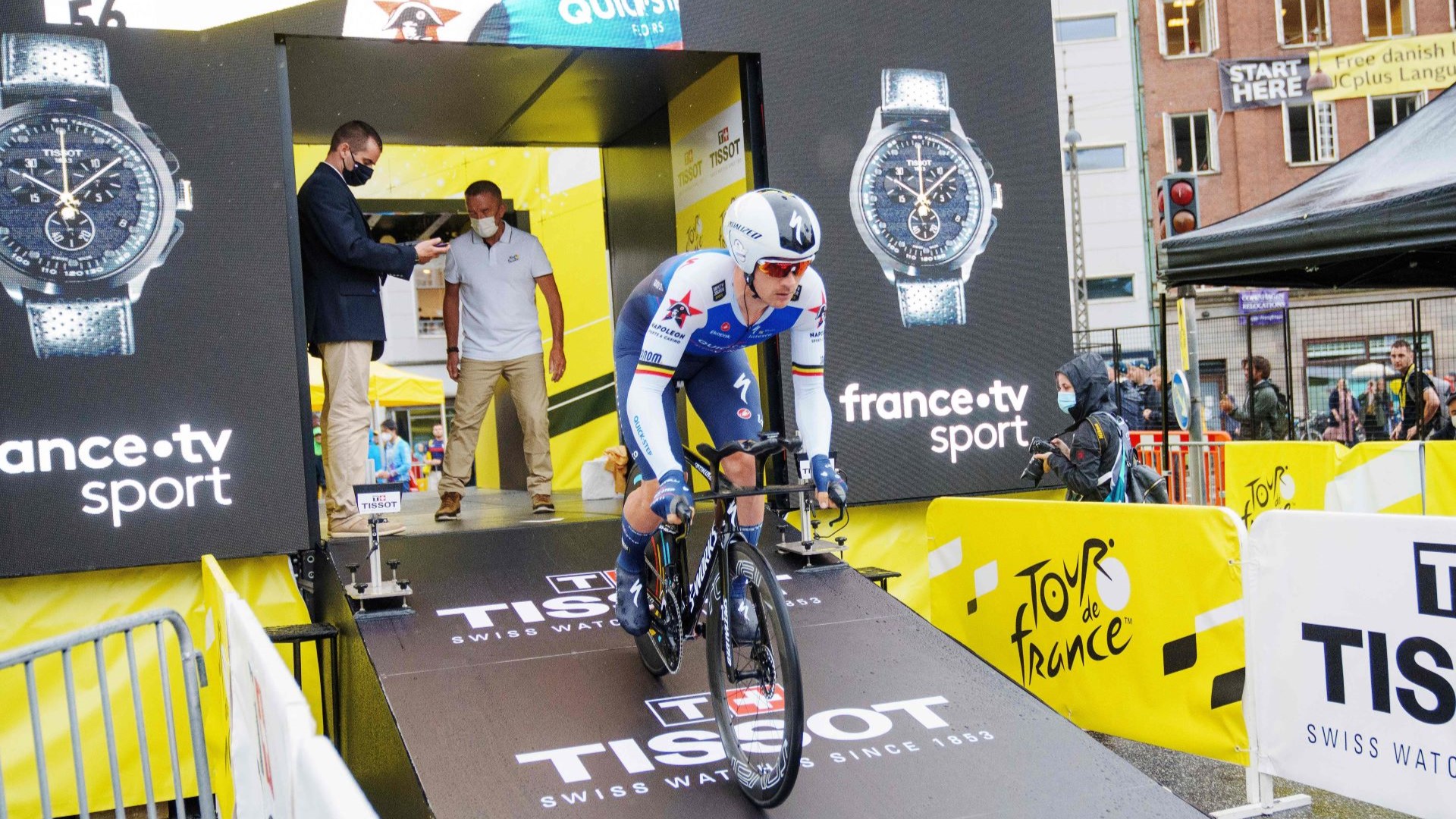

Timing and sport go hand in hand; it’s tough to have a race without a clock. As watches and timing technology have progressed to become more reliable, sport has been a natural avenue for companies to showcase the capabilities of their equipment. These two different worlds, wristwatches and professional sport, have grown together, often symbiotically, into the major economic and cultural institutions they are today.
Formula One, in particular, has a long and storied history with watch brands and race timing, especially behemoths like Rolex and Tag Heuer. When races come down to tenths, hundredths, or thousandths of a second, timing is critical for ascertaining the outcome of an event. Cycling events, which are raced at lower speeds, typically don’t require the same level of precision, but accurate timing still plays a role.
In the last few years of professional cycling, we’ve seen several instances where riders seemingly finish a race at the same exact moment. Tom Pidcock and Wout van Aert crossed the line at the 2021 Amstel Gold Race so close together that the accuracy of the timing equipment was called into question afterward. If races are not able to clearly produce accurate results that can be corroborated, events lose credibility. Why bother holding a race at all if the outcome cannot be determined?
Another sport with a deeply ingrained watch culture and history is competitive sailing. Major watch brands like Bremont, Panerai and Rolex design watches specifically for the rigors of these events, where attributes like weight, precision and durability are key to success. And sailing and cycling have some interesting parallels: both can be done casually and competitively, requiring specific expertise and financial resources to participate.
In cycling, tight finishes with multiple cameras and angles that are the norm today are a far cry from the early days of the sport, when a handheld stopwatch was the pinnacle of technology and race victories were often measured in minutes, hours, or even days. As cycling has evolved and become more modernized, timing equipment has kept pace alongside, and watches and watch culture have been along for the ride.
Some history

Early editions of the Tour de France were run using a points system to differentiate competitors, which was logistically much easier in an era when telephones were still brand new. Proper timing was introduced to the Tour in 1913, though it wasn’t particularly accurate as it was still controlled by hand.
Photo finish technology was first introduced in 1948, and progressed rapidly to become a fixture at the Olympics and other high-level competitive events. This in turn allowed for much more accurate timing and record keeping, which created increased interest as sport could now be quantified and analyzed in new and interesting ways.
The latest race content, interviews, features, reviews and expert buying guides, direct to your inbox!
The 1990s brought the advent of GPS, timing chips, and computer-controlled timekeeping, all of which form the basis for how cycling events are tracked and timed today. With increasing accuracy and reliable data about race speeds and gaps between riders on the road, teams have become more refined and specialized in how they approach race tactics and strategies.
With timing accuracy largely a solved problem (extremely tight finishes notwithstanding), the spectacle of cycling has become a powerful vehicle for watch brands to market their products.
Festina
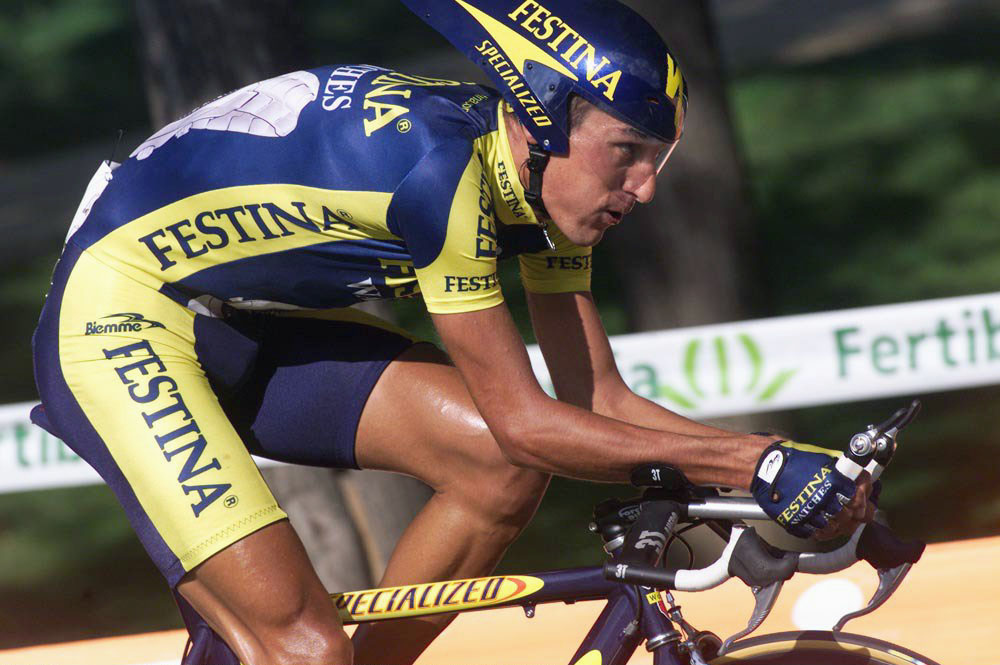
Perhaps the watch brand that people most closely associate with modern cycling, for better or worse, is Festina. The brand, originally founded in Switzerland in 1902, is currently part of a large watch conglomerate based in Spain. Festina came on board as the official timekeeper of the Tour de France in 1992, but was involved prior to that as the title sponsor of a professional team beginning in 1990.
The team started out modestly but steadily grew in prominence in the 1990s as a French powerhouse before ultimately culminating in what is now known as the Festina Affair, in which the team’s systemic doping practices came to light during the 1998 Tour de France. Riders and staff were arrested and faced charges for their criminal actions in a scandal that shook the entire world of cycling.
The 1990s were a difficult time for cycling, and Festina’s participation as a sponsor of the sport has forever linked the brand to the world of doping and skulduggery that were endemic during that era. The team survived barely, and Festina remained in the sport as a race sponsor until 2016.
Tissot
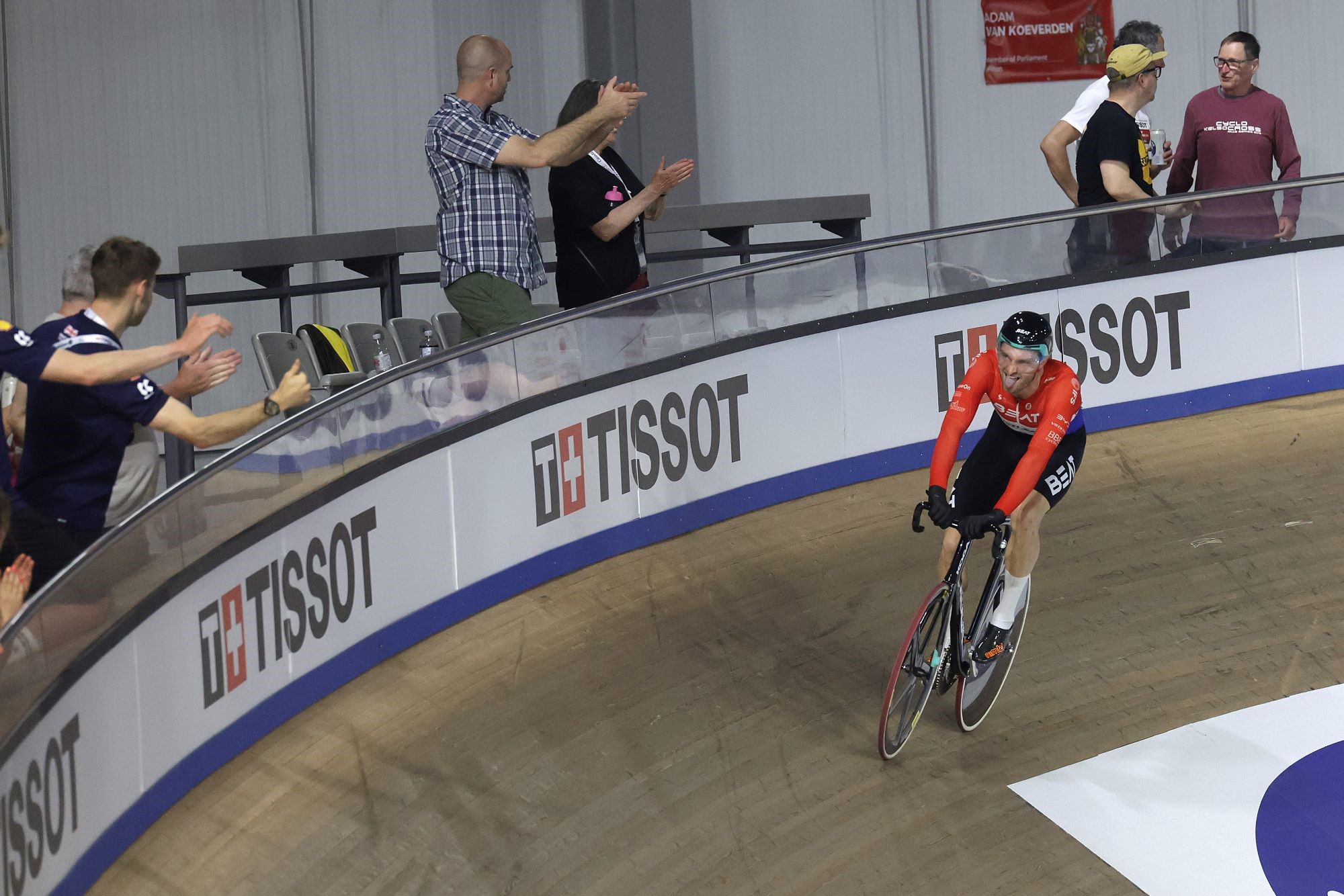
Following Festina’s departure, Swiss watch brand Tissot took over the Tour’s timekeeping duties, reprising the role it held from 1988 to 1992. The brand continues to sponsor the Tour today, in addition to UCI events in other disciplines.
As one of the longtime sponsors of the Tour, Tissot’s name is closely aligned with the race. The Tissot logo can be seen plastered around the start and finish lines at the Tour and other ASO races as well as directly above every rider’s name on the follow cars that support each rider during individual time trials.
By sponsoring the race and not an individual team, Tissot is guaranteed plenty of exposure every July, but without the risks of a single team having a poor race or falling into scandal, à la Festina. This relationship also provides the company with the history and gravitas of the race to call upon when developing its products. Tissot is currently owned within the umbrella of the Swatch group, which also includes the horological heavyweight Omega in its catalog.
Tudor
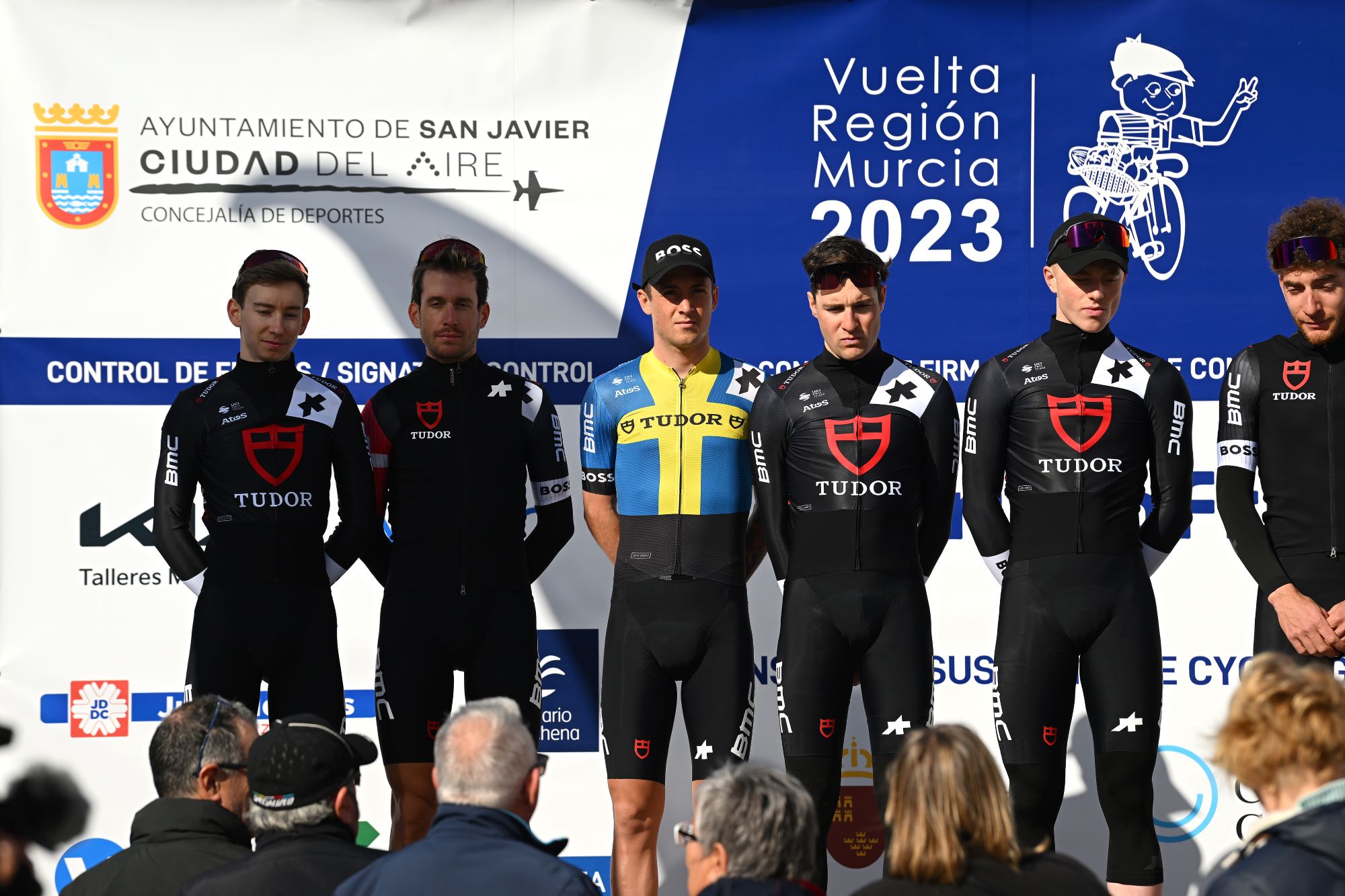
In today’s peloton, the watch brand with the most noteworthy impact is Geneva-based Tudor, which sponsors Tudor Pro Cycling. The team is based in Switzerland and is sponsored by a number of other Swiss companies like BMC, Assos and DT Swiss.
Tudor is a major watch brand in its own right, though it stands in the shadow of its larger sibling, Rolex. Many of its most popular designs are based on vintage Rolex watches and are currently in high demand.
The team has been gaining momentum in the last few years on the strong riding of Dutch sprinter Arvid de Kleijn, and under the leadership of figurehead Fabien Cancellara, yet another Swiss export. It will be interesting to see how the team progresses in the coming seasons and if more watch brands with money to throw around consider investing in cycling.
Richard Mille

Another watch brand involved prominently in cycling is Richard Mille. Though polarizing for its unique aesthetic, Richard Mille is universally acknowledged as a cutting-edge watch manufacturer for its use of lightweight, ultra-modern materials and sports-focused designs. Its watches are also startlingly expensive. There were several articles written about Julian Alaphillipe when he wore a Richard Mille watch worth nearly $150k during a race in 2020.
The brand sponsors Tadej Pogacar’s UAE Team Emirates squad as well as the Scuderia Ferrari F1 racing team. Its watches can also be seen on the wrists of several tennis superstars while they play, demonstrating the durability of the watches firsthand.
Richard Mille himself is also a fan of cycling and has been a frequent guest at the Tour. While attending the race in 2016, he gave one of his personal watches to Mark Cavendish, a noted watch aficionado and fan.
Separately, Cavendish and his family were unfortunately subjected to an armed robbery apparently targeting his watches in 2021. Some of the people involved have since been caught and imprisoned, though the case has not been completely resolved as of November 2023.
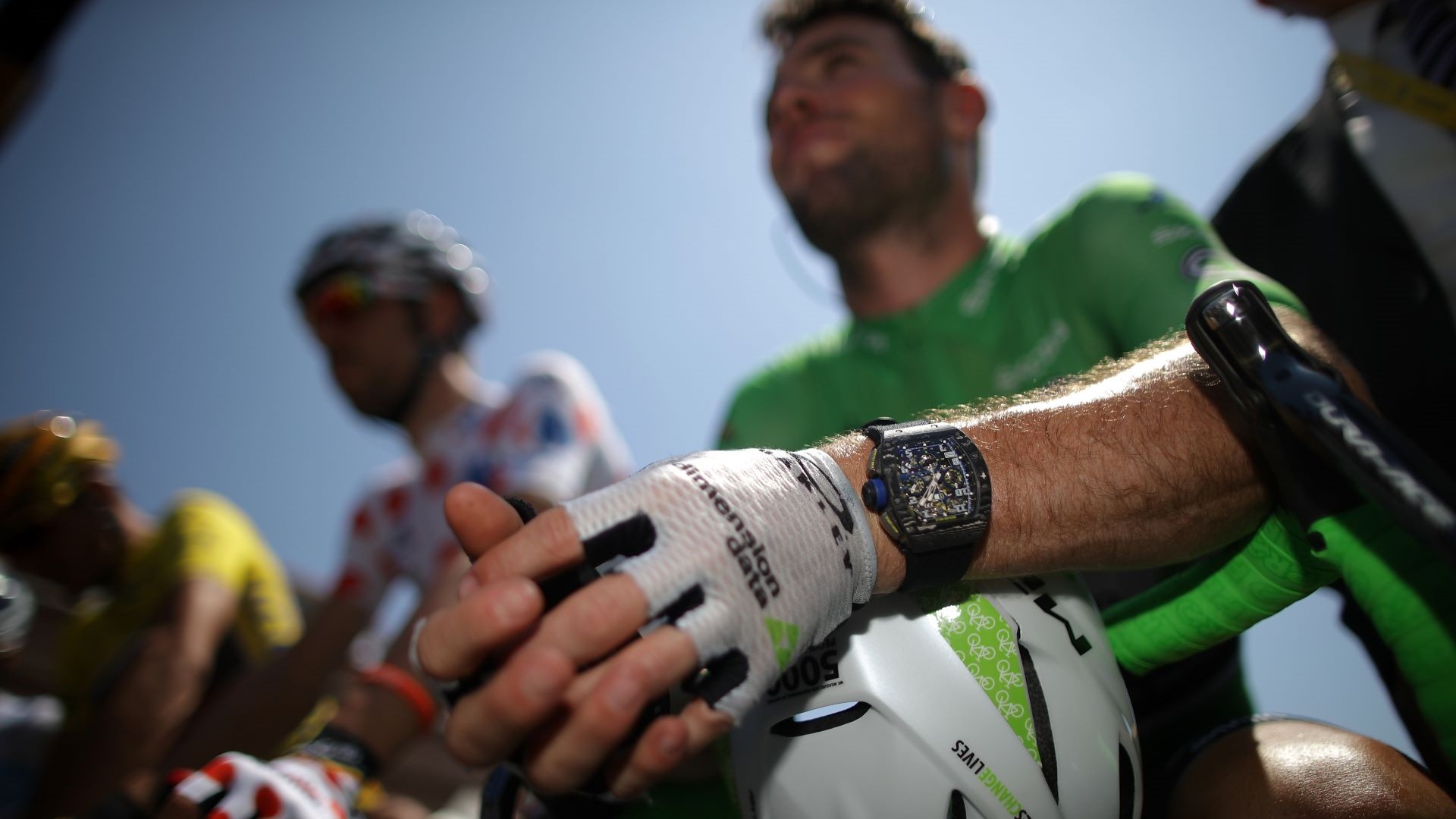
Many professional riders can be seen wearing smart watches and other wearable biorhythm trackers to enhance their training and recovery. Highly useful technologies like blood-glucose monitors and real-time internal temperature sensors represent the cutting edge of how we understand athletes and their performances.
Expensive wrist watches have often been given as gifts by riders to teammates after successful seasons or races. A watch can be engraved to commemorate an event or date, and gifts of this nature help to foster unity among teammates in a sport that relies heavily on it for success. Domestiques with long careers in support of prolific winners can potentially end up with a valuable collection of watches simply from doing their jobs well for their leaders.
Anecdotally, riders are now shifting away from gifting one another high-end watches and instead are purchasing fancy espresso machines, which offers up yet another exciting world of shiny, expensive things.
Watches and cycling have a history, though, so I’d be willing to bet there’s more to come.
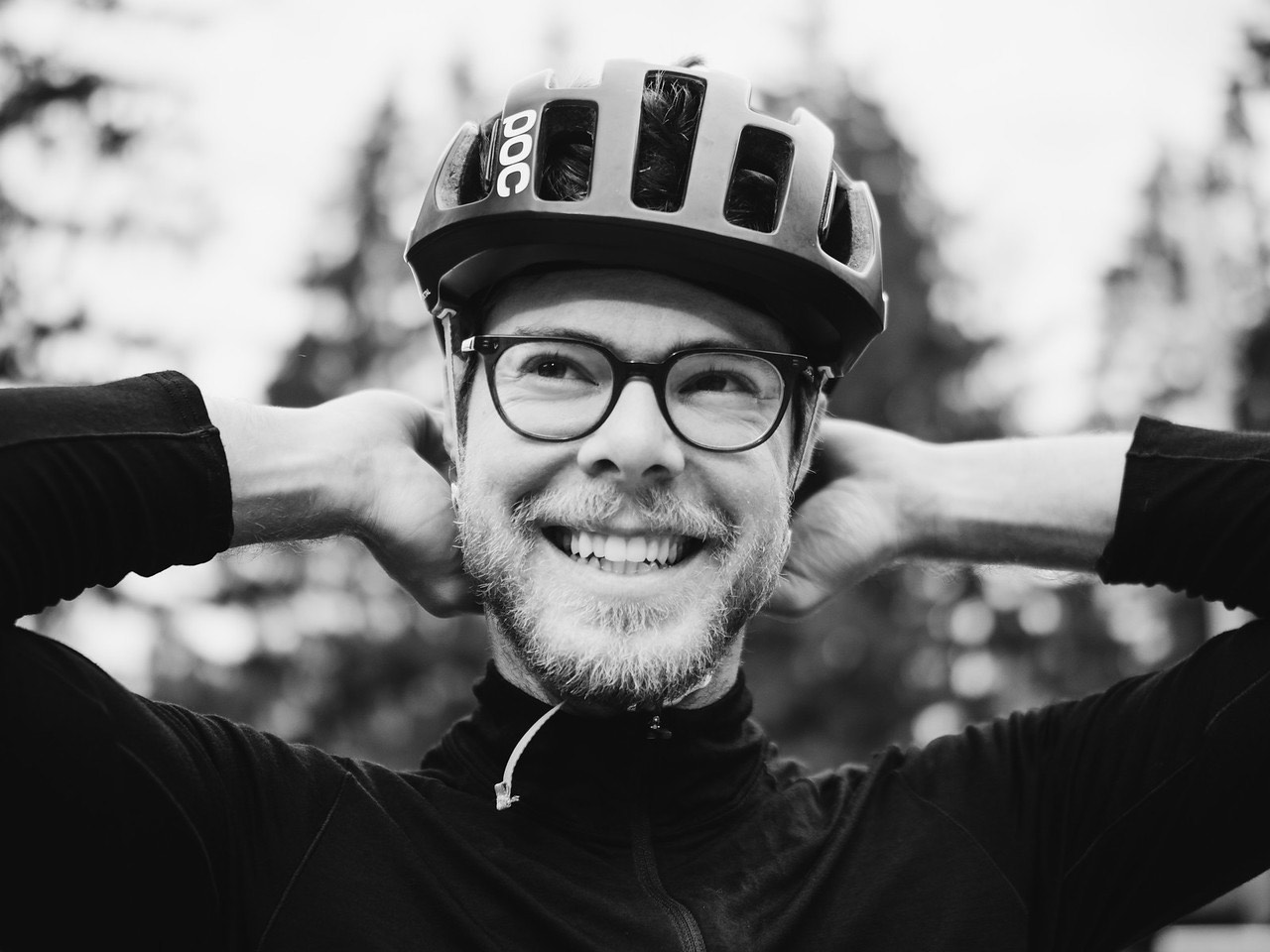
Tyler Boucher is a former (and occasionally still) bike racer across several disciplines. These days, he spends most of his time in the saddle piloting his children around in a cargo bike. His writing has appeared in magazines published in Europe, the UK and North America. He lives in Seattle, Washington.